Abstract
An analysis of the role of adrenergic transmission in mediating the hyperpolarizing, slow inhibitory postsynaptic potential has revealed that dopamine is apparently the specific synaptic transmitter for this response. An additional action of dopamine was discovered, namely the selective facilitation of another synaptic response, the slow excitatory postsynaptic potential. (This potential is a depolarizing response to the muscarinic action of acetylcholine.) This second, modulatory, role of dopamine has characteristics strikingly different from other known modes of synaptic action. After a brief initial action by dopamine, the facilitation of the slow excitatory postsynaptic potential response can persist for hours and is unaffected by a delayed blockade of the postsynaptic receptors for dopamine. This suggests that the modulation consists of a long-lasting metabolic and/or structural change induced in the postsynaptic neuron by dopamine.
These conclusions are based on the demonstrated actions of dopamine and other catecholamines, as well as on effects (on dopamine actions and on slow postsynaptic potentials of alpha-adrenergic blockers, of blockade, of dopamine oxidase, of depletion of ganglionic catecholamine by muscarinic excitation, and of a selective re-uptake of dopamine after such depletion.
Full text
PDF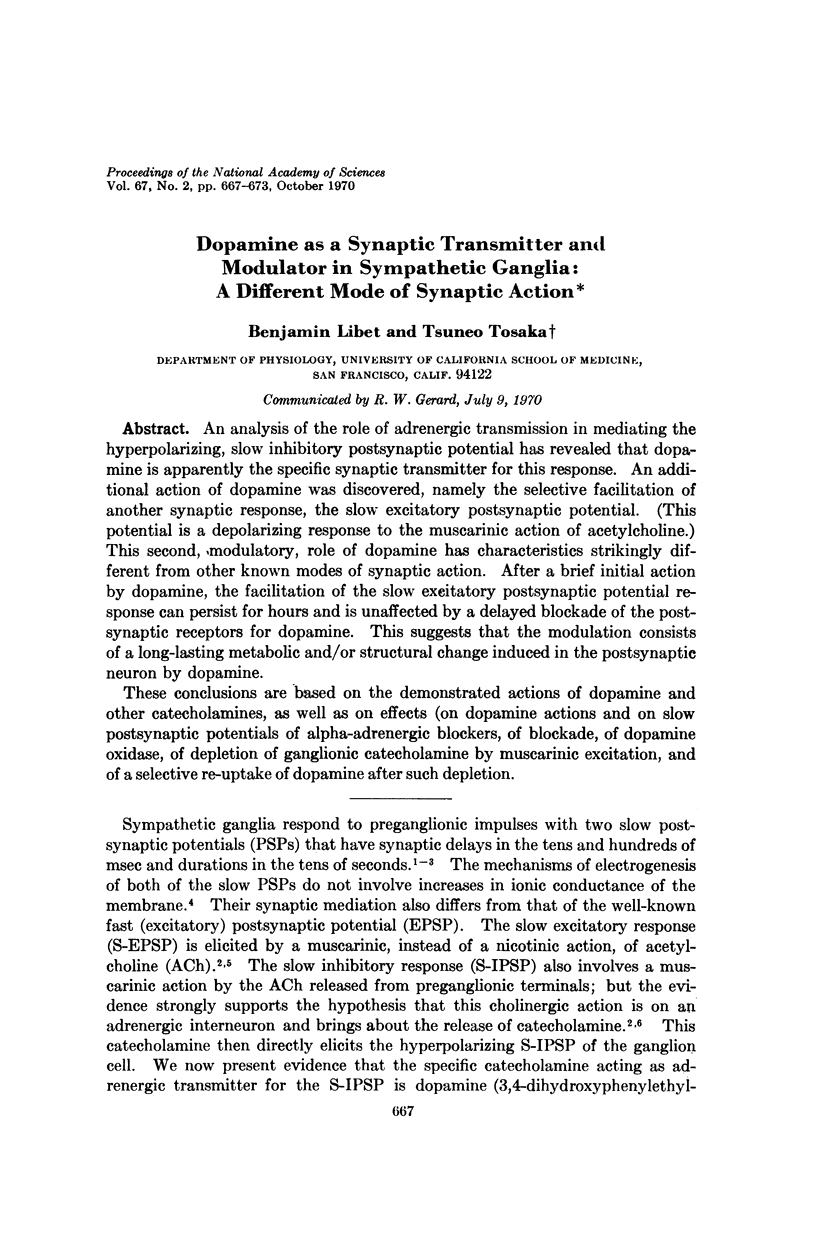
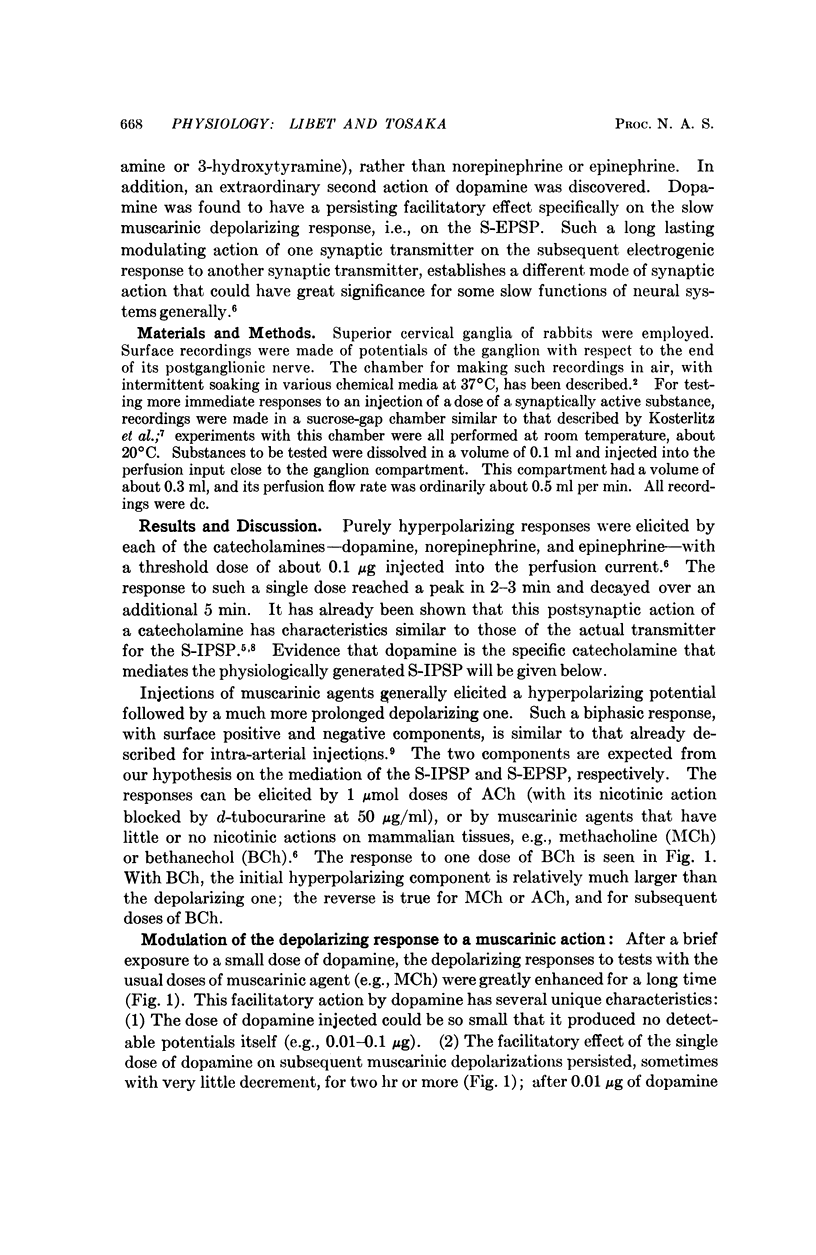
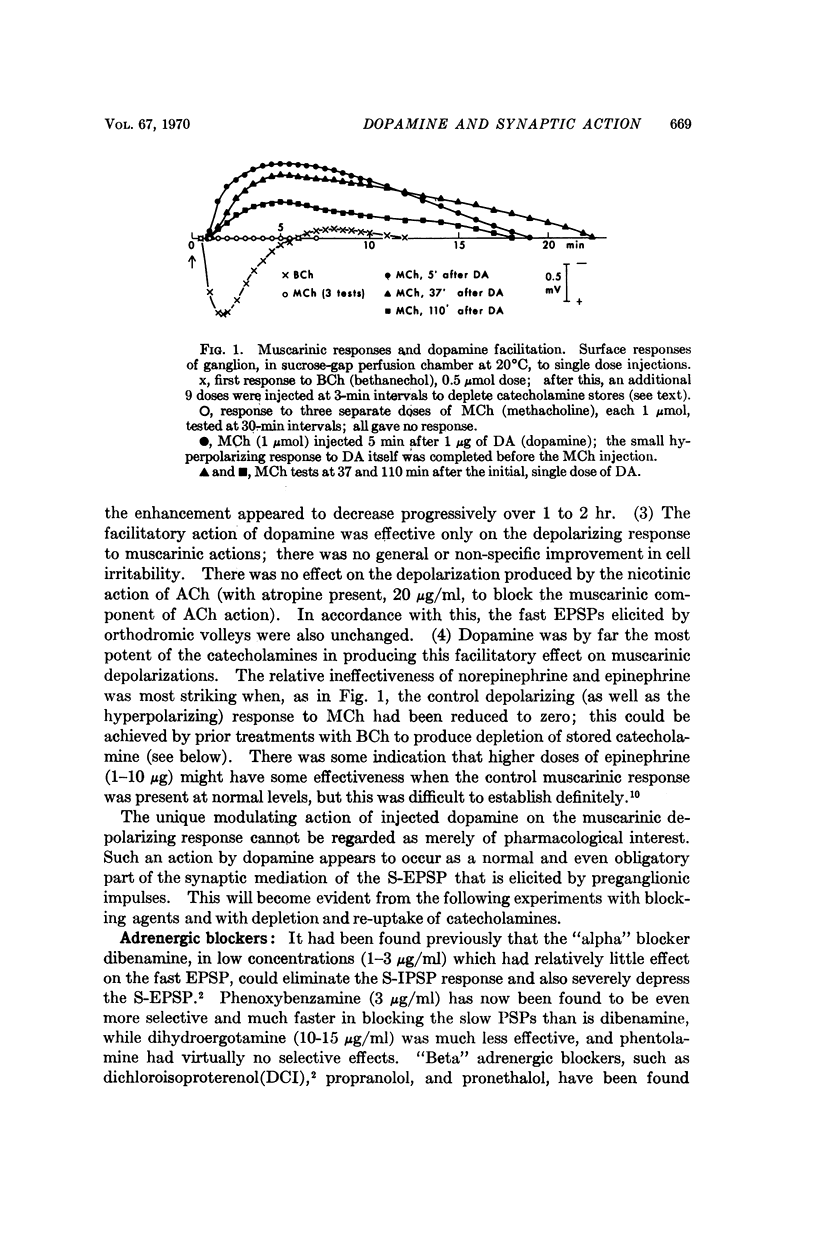
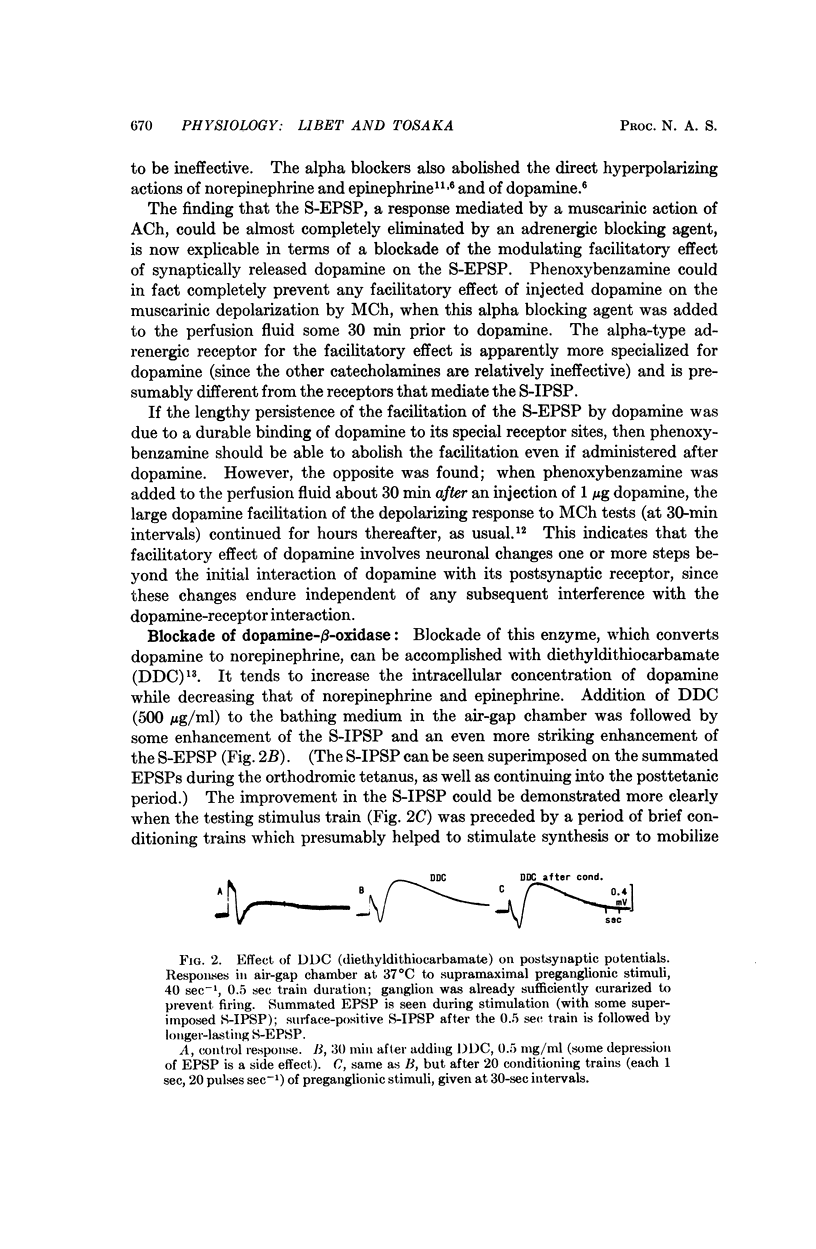
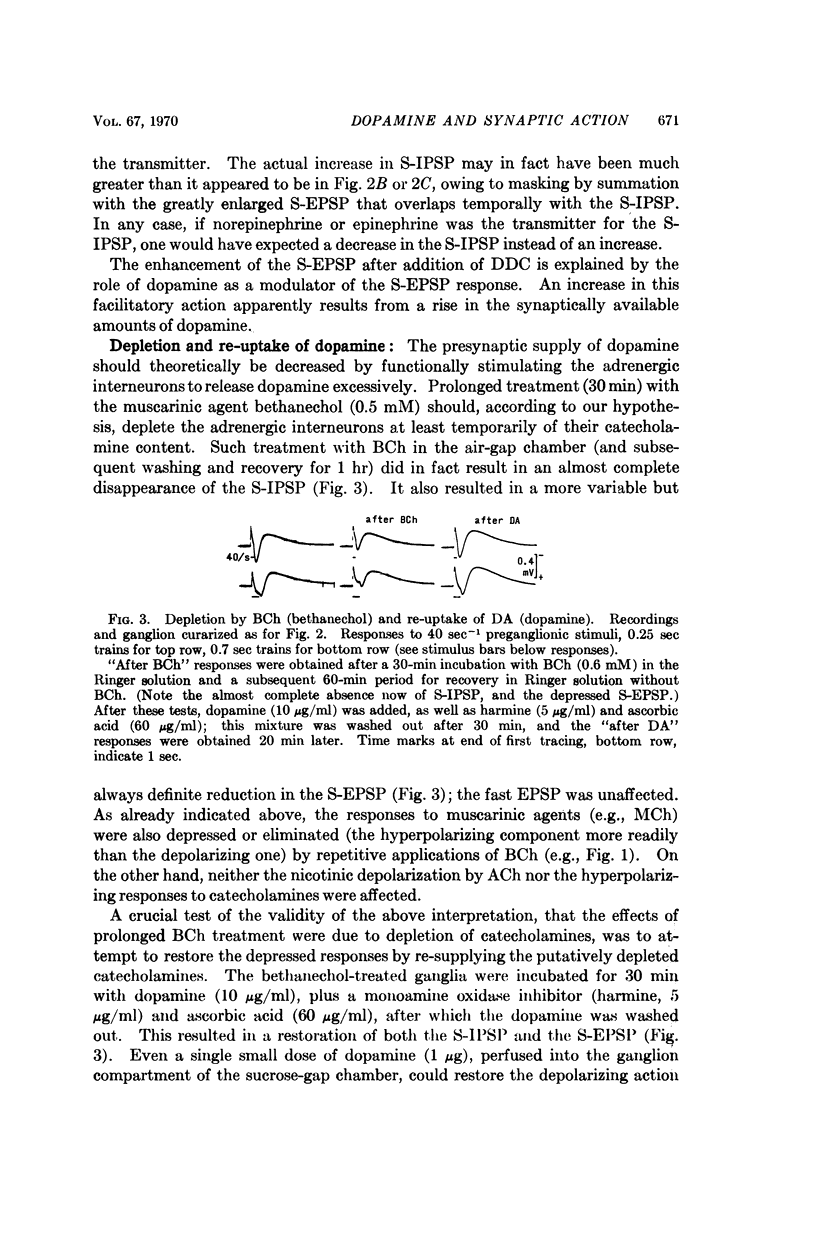
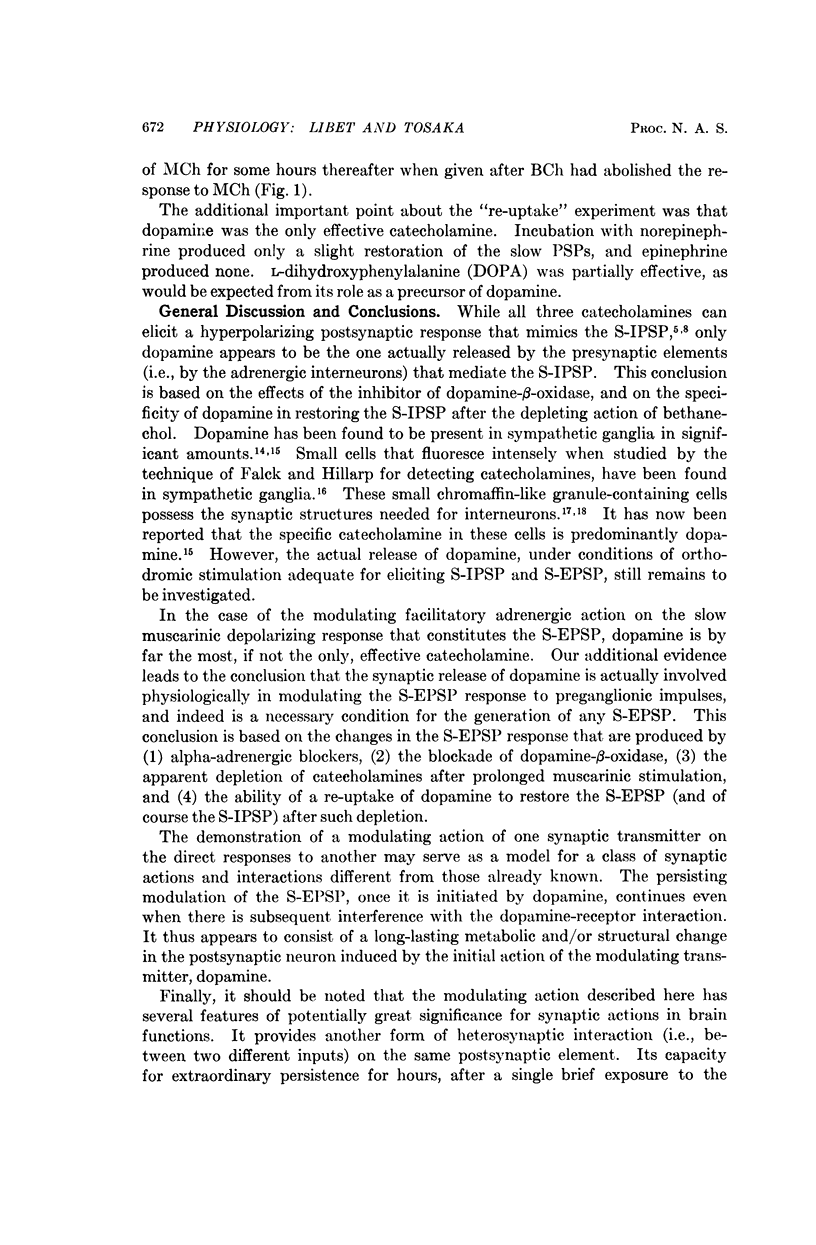
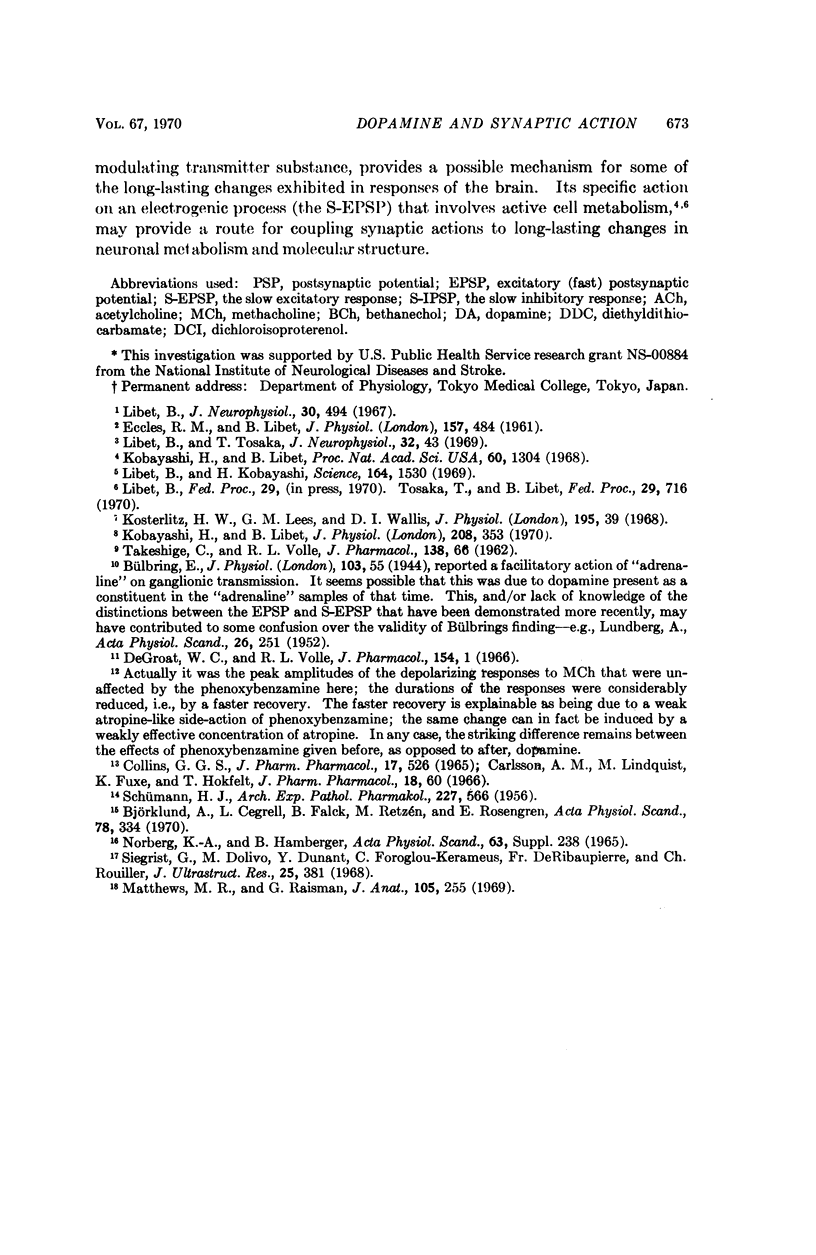
Selected References
These references are in PubMed. This may not be the complete list of references from this article.
- Björklund A., Cegrell L., Falck B., Ritzén M., Rosengren E. Dopamine-containing cells in sympathetic ganglia. Acta Physiol Scand. 1970 Mar;78(3):334–338. doi: 10.1111/j.1748-1716.1970.tb04668.x. [DOI] [PubMed] [Google Scholar]
- Collins G. G. Inhibition of dopamine-beta-oxidase by diethyldithiocarbamate. J Pharm Pharmacol. 1965 Aug;17(8):526–527. doi: 10.1111/j.2042-7158.1965.tb07720.x. [DOI] [PubMed] [Google Scholar]
- ECCLES R. M., LIBET B. Origin and blockade of the synaptic responses of curarized sympathetic ganglia. J Physiol. 1961 Aug;157:484–503. doi: 10.1113/jphysiol.1961.sp006738. [DOI] [PMC free article] [PubMed] [Google Scholar]
- Kobayashi H., Libet B. Actions of noradrenaline and acetylcholine on sympathetic ganglion cells. J Physiol. 1970 Jun;208(2):353–372. doi: 10.1113/jphysiol.1970.sp009125. [DOI] [PMC free article] [PubMed] [Google Scholar]
- Kobayashi H., Libet B. Generation of slow postsynaptic potentials without increases in ionic conductance. Proc Natl Acad Sci U S A. 1968 Aug;60(4):1304–1311. doi: 10.1073/pnas.60.4.1304. [DOI] [PMC free article] [PubMed] [Google Scholar]
- Libet B., Kobayashi H. Generation of adrenergic and cholinergic potentials in sympathetic ganglion cells. Science. 1969 Jun 27;164(3887):1530–1532. doi: 10.1126/science.164.3887.1530. [DOI] [PubMed] [Google Scholar]
- Libet B. Long latent periods and further analysis of slow synaptic responses in sympathetic ganglia. J Neurophysiol. 1967 May;30(3):494–514. doi: 10.1152/jn.1967.30.3.494. [DOI] [PubMed] [Google Scholar]
- Libet B., Tosaka T. Slow inhibitory and excitatory postsynaptic responses in single cells of mammalian sympathetic ganglia. J Neurophysiol. 1969 Jan;32(1):43–50. doi: 10.1152/jn.1969.32.1.43. [DOI] [PubMed] [Google Scholar]
- Matthews M. R., Raisman G. The ultrastructure and somatic efferent synapses of small granule-containing cells in the superior cervical ganglion. J Anat. 1969 Sep;105(Pt 2):255–282. [PMC free article] [PubMed] [Google Scholar]
- SCHUMANN H. J. Nachweis von Oxytyramin (Dopamin) in sympathischen Nerven und Ganglien. Naunyn Schmiedebergs Arch Exp Pathol Pharmakol. 1956;227(6):566–573. [PubMed] [Google Scholar]
- Siegrist G., Dolivo M., Dunant Y., Foroglou-Kerameus C., De Ribaupierre F., Rouiller C. Ultrastructure and function of the chromaffin cells in the superior cervical ganglion of the rat. J Ultrastruct Res. 1968 Dec;25(5):381–407. doi: 10.1016/s0022-5320(68)80093-0. [DOI] [PubMed] [Google Scholar]
- TAKESHIGE C., VOLLE R. L. Bimodal response of sympathetic ganglia to acetylcholine following eserine or repetitive preganglionic stimulation. J Pharmacol Exp Ther. 1962 Oct;138:66–73. [PubMed] [Google Scholar]


